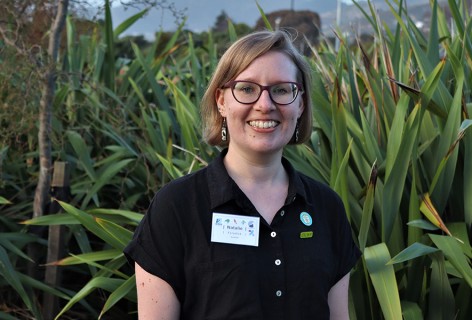Koekoeā Quest – Uncovering secrets of the long-tailed cuckoo
In this section
-
Ecosystem resilience
- Plants, invertebrates, fungi & bacteria
- Honey landscape model
- Increasing wader abundance
- Kiwi Rescue
- Koekoeā Quest – Uncovering secrets of the long-tailed cuckoo
- Long-term Ecology Laboratory
- More Birds in the Bush
- Restoring wetland ecosystem functioning
- Te Kura Huna o Te Urewera (The Hidden Treasure of Te Urewera) documentary released
- Wetlands
We are working with the Department of Conservation to better understand the threats to koekoeā, to reverse their decline, and we are on the lookout for accidentally killed specimens.
Koekoeā breed only in forests of Aotearoa New Zealand. Here, they lay their eggs almost exclusively in the nests of pōpokotea (whitehead) in the North Island, and mohua (yellowhead) and pīpipi (brown creeper) in the South Island – three closely related endemic forest birds. Then, in late summer and autumn, they migrate up to 6000 km, to islands scattered across a vast 11,000 km-wide arc of the Pacific. Their return to New Zealand around September or October, heralded by their piercing drawn-out shriek, has long been a sign of the arrival of spring, but koekoeā and their distinctive calls are declining, and they are now classed as Threatened (Nationally Vulnerable).
The huge non-breeding range of koekoeā exposes them to a range of threats, such as habitat loss and extreme weather events. If birds from different parts of Aotearoa go to different areas of the Pacific, their loss from part of their range could have cascading effects thousands of km away.
While koekoeā can fly non-stop for thousands of km, their hosts only cross short non-forest gaps and, like most of our forest birds, they are vulnerable to predation by introduced mammalian predators like ship rats and stoats. Decline of the hosts is followed by decline and local extinction of koekoeā populations, but when new populations of the hosts have been established (e.g., through translocation to ecosanctuaries) koekoeā have not returned. Understanding why, and how to change this, is crucial for their conservation.
Our research will track koekoeā to better understand the movement within Aotearoa and on migration. We will also use genomics tools to estimate the current population size and gene flow between remaining koekoeā populations across Aotearoa, and you might be able to help.
How you can help
Koekoeā have an unfortunate habit of flying into windows, especially when they are on migration in spring and autumn, meaning they are often found dead or injured near buildings almost anywhere in New Zealand. Samples from these birds are a valuable contribution to our research – we only need a small amount of tissue, and the rest of the specimen will be made available to iwi or museums.
Injured koekoeā
If you find an injured koekoeā, please phone 0800 DOC HOT (0800 362 468), or contact your nearest DOC office or native bird rescue. Then, please let us know too so we can liaise with them.
Freshly-dead koekoeā
If you find a freshly-dead koekoeā, please put it in a plastic bag, freeze it, and contact Neil Fitzgerald fitzgeraldn@landcareresearch.co.nz as soon as possible.


